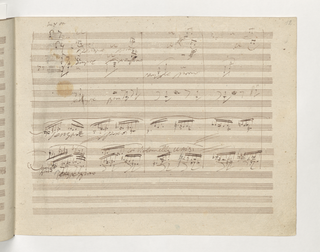
The Symphony No. 9 in D minor, Op. 125, is a choral symphony, the final complete symphony by Ludwig van Beethoven, composed between 1822 and 1824. It was first performed in Vienna on 7 May 1824. The symphony is regarded by many critics and musicologists as a masterpiece of Western classical music and one of the supreme achievements in the history of music. One of the best-known works in common practice music, it stands as one of the most frequently performed symphonies in the world.

An orchestra is a large instrumental ensemble typical of classical music, which combines instruments from different families. There are typically four main sections of instruments:
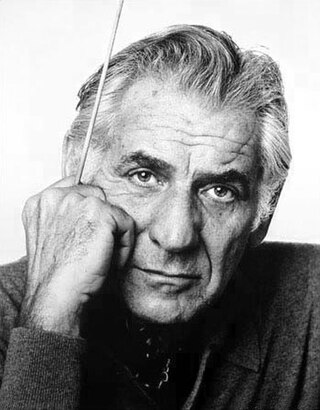
Leonard Bernstein was an American conductor, composer, pianist, music educator, author, and humanitarian. Considered to be one of the most important conductors of his time, he was the first American-born conductor to receive international acclaim. Bernstein was "one of the most prodigiously talented and successful musicians in American history" according to music critic Donal Henahan. Bernstein's honors and accolades include seven Emmy Awards, two Tony Awards, and 16 Grammy Awards as well as an Academy Award nomination. He received the Kennedy Center Honor in 1981.
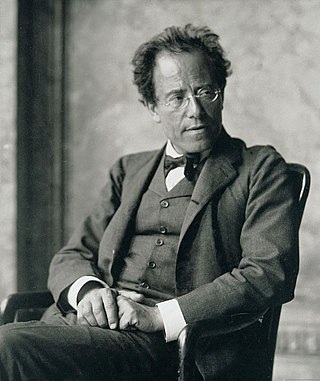
Gustav Mahler was an Austro-Bohemian Romantic composer, and one of the leading conductors of his generation. As a composer he acted as a bridge between the 19th-century Austro-German tradition and the modernism of the early 20th century. While in his lifetime his status as a conductor was established beyond question, his own music gained wide popularity only after periods of relative neglect, which included a ban on its performance in much of Europe during the Nazi era. After 1945 his compositions were rediscovered by a new generation of listeners; Mahler then became one of the most frequently performed and recorded of all composers, a position he has sustained into the 21st century.

Bruno Walter was a German-born conductor, pianist and composer. Born in Berlin, he escaped Nazi Germany in 1933, was naturalised as a French citizen in 1938, and settled in the United States in 1939. He worked closely with Gustav Mahler, whose music he helped to establish in the repertory, held major positions with the Leipzig Gewandhaus Orchestra, New York Philharmonic, Concertgebouw Orchestra, Salzburg Festival, Vienna State Opera, Bavarian State Opera, Staatsoper Unter den Linden and Deutsche Oper Berlin, among others, made recordings of historical and artistic significance, and is widely considered to be one of the great conductors of the 20th century.
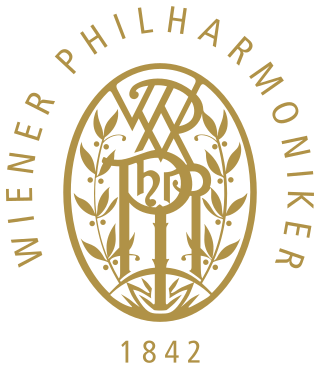
Vienna Philharmonic is an orchestra that was founded in 1842 and is considered to be one of the finest in the world.

The Symphony No. 8 in E-flat major by Gustav Mahler is one of the largest-scale choral works in the classical concert repertoire. As it requires huge instrumental and vocal forces it is frequently called the "Symphony of a Thousand", although the work is normally presented with far fewer than a thousand performers and the composer did not sanction that name – actually, he disapproved of it. The work was composed in a single inspired burst at his Maiernigg villa in southern Austria in the summer of 1906. The last of Mahler's works that was premiered in his lifetime, the symphony was a critical and popular success when he conducted the Munich Philharmonic in its first performance, in Munich, on 12 September 1910.

The Symphony No. 4 in G major by Gustav Mahler was composed from 1899 to 1900, though it incorporates a song originally written in 1892. That song, "Das himmlische Leben", presents a child's vision of heaven and is sung by a soprano in the symphony's Finale. Both smaller in orchestration and shorter in length than Mahler's earlier symphonies, the Fourth Symphony was initially planned to be in six movements, alternating between three instrumental and three vocal movements. The symphony's final form—begun in July 1899 at Bad Aussee and completed in August 1900 at Maiernigg—retains only one vocal movement and is in four movements: Bedächtig, nicht eilen ; In gemächlicher Bewegung, ohne Hast ; Ruhevoll,poco adagio ; and Sehr behaglich.

The Symphony No. 9 by Gustav Mahler was written between 1908 and 1909, and was the last symphony that he completed. A typical performance takes about 75 to 90 minutes. A survey of conductors voted Mahler's Symphony No. 9 the fourth greatest symphony of all time in a ballot conducted by BBC Music Magazine in 2016. As in the case of his earlier Das Lied von der Erde, Mahler did not live to see his Symphony No. 9 performed.
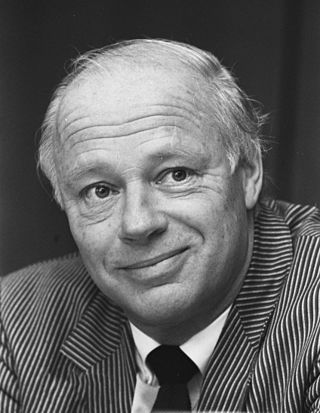
Bernard Johan Herman Haitink was a Dutch conductor and violinist. He was the principal conductor of several international orchestras, beginning with the Royal Concertgebouw Orchestra in 1961. He moved to London, as principal conductor of the London Philharmonic Orchestra from 1967 to 1979, music director at Glyndebourne Opera from 1978 to 1988 and of the Royal Opera House from 1987 to 2002, when he became principal conductor of the Staatskapelle Dresden. Finally, he was principal conductor of the Chicago Symphony Orchestra from 2006 to 2010. The focus of his prolific recording was classical symphonies and orchestral works, but he also conducted operas. He conducted 90 concerts at The Proms in London, the last on 3 September 2019 with the Vienna Philharmonic. His awards include Grammy Awards and the 2015 Gramophone Award for his lifetime achievements.

Lorin Varencove Maazel was an American conductor, violinist and composer. He began conducting at the age of eight and by 1953 had decided to pursue a career in music. He had established a reputation in the concert halls of Europe by 1960 but, by comparison, his career in the U.S. progressed far more slowly. He served as music director of The Cleveland Orchestra, Orchestre National de France, Pittsburgh Symphony Orchestra, Bavarian Radio Symphony Orchestra, and the New York Philharmonic, among other posts. Maazel was well-regarded in baton technique and possessed a photographic memory for scores. Described as mercurial and forbidding in rehearsal, he mellowed in old age.

Seiji Ozawa was a Japanese conductor known internationally for his work as music director of the Toronto Symphony Orchestra, the San Francisco Symphony, and especially the Boston Symphony Orchestra (BSO), where he served from 1973 for 29 years. After conducting the Vienna New Year's Concert in 2002, he was director of the Vienna State Opera until 2010. In Japan, he founded the Saito Kinen Orchestra in 1984, their festival in 1992, and the Tokyo Opera Nomori in 2005.

Michael Tilson Thomas is an American conductor, pianist and composer. He is Artistic Director Laureate of the New World Symphony, an American orchestral academy based in Miami Beach, Florida, Music Director Laureate of the San Francisco Symphony, and Conductor Laureate of the London Symphony Orchestra.

Mariss Ivars Georgs Jansons was a Latvian conductor, best known for his interpretations of Mahler, Strauss, and Russian composers such as Tchaikovsky, Rachmaninoff, and Shostakovich. During his lifetime he was often cited as among the world's leading conductors; in a 2015 Bachtrack poll, he was ranked by music critics as the world's third best living conductor. Jansons was long associated with the Bavarian Radio Symphony Orchestra and Royal Concertgebouw Orchestra as music director.

William Steinberg was a German-American conductor.

Anton Bruckner's Symphony No. 3 in D minor, WAB 103, was dedicated to Richard Wagner and is sometimes known as his "Wagner Symphony". It was written in 1873, revised in 1877 and again in 1889.

Carlos Païta was an Argentine conductor. He was born in Buenos Aires.

Manfred Honeck is an Austrian conductor. He is currently the music director of the Pittsburgh Symphony Orchestra.

The Vienna Singverein is the concert choir of the Vienna Musikverein with around 230 members. It is regularly requested by top orchestras and conductors for large and varied projects.
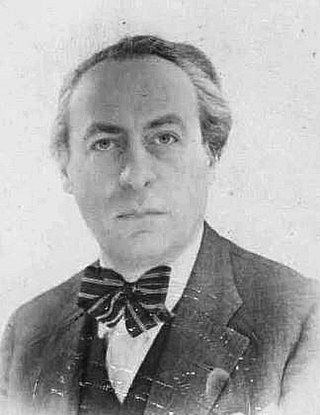
Eugen Szenkar was a Hungarian-born German-Brazilian conductor who made an international career in Austria, Germany, Russia, and Brazil. He promoted the stage works of Bela Bartók and other contemporary music at the Oper Frankfurt, the Cologne Opera, where he conducted the world premiere of The Miraculous Mandarin, and in Berlin. He conducted all of the symphonies by Gustav Mahler.



















